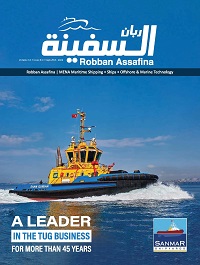METIS AI-based analytics meet SEA WORLD needs for Carbon Intensity Index
Machine Learning and AI are providing ship operators Sea World Management and Trading Inc. (SEA WORLD) and Sea Globe Management and Trading Inc. (SEA GLOBE) with a direct monitoring and reporting route to CII compliance, in a significant new extension to cloud-based data gathering and analytics capabilities from METIS Cyberspace Technology.
From 1 January 2023, the International Maritime Organization requires all ships of 5,000 GT and above to derive their CII (the Carbon Intensity Index), using a formula applied under SEEMP III - the UN agency’s third Ship Energy Efficiency Management Plan scheme. The CII evaluates vessel efficiency in terms of grams of CO2 emitted per cargo capacity and nautical mile, with IMO developing performance categories spanning a highly desirable ‘A’ to an unacceptable ‘E’.
Building on its existing cloud platform infrastructure, METIS is applying its cutting-edge data gathering and analytics tools to serve the realities of CII implementation. Athens-based SEA WORLD and SEA GLOBE are applying METIS predictive analytics and CII evaluation across a fleet of 19 of their wet tankers.
Drawing on a CO2 monitoring system sampling emissions more than once every 30 seconds, METIS uses a ship’s known characteristics, including its machinery performance, fuel oil consumption, fouling, cargo weights and exposure to weather, to derive its CII rating.
“It’s critical that our investments in new technologies reflect our quality-assured management systems and services,” said Capt. Michael Reppas, Managing Director of SEA WORLD. “We are therefore proactive in putting in place the monitoring and analytics to deliver accuracy, transparency and predictive capability on lower carbon shipping.“
Serafeim Katsikas, CTO at METIS Cybertechnology, said that the new CII rating regime offered an example of how managing data analytics at the individual ship level best helped owners to meet their efficiency and decarbonisation goals.
“AI and Machine Learning create a straightforward pathway to derive the carbon intensity rating, but can also be useful for operational guidance to benchmark a voyage plan against CII,” Kastsikas said. “In addition, should a ship fall short of its desired rating, analytics can identify the impact of different options for CII improvement - such as auxiliary system adjustments, speed reduction, hull cleaning, alternative fuels or carbon-capture.”

| Read Here | |
 |
|



































